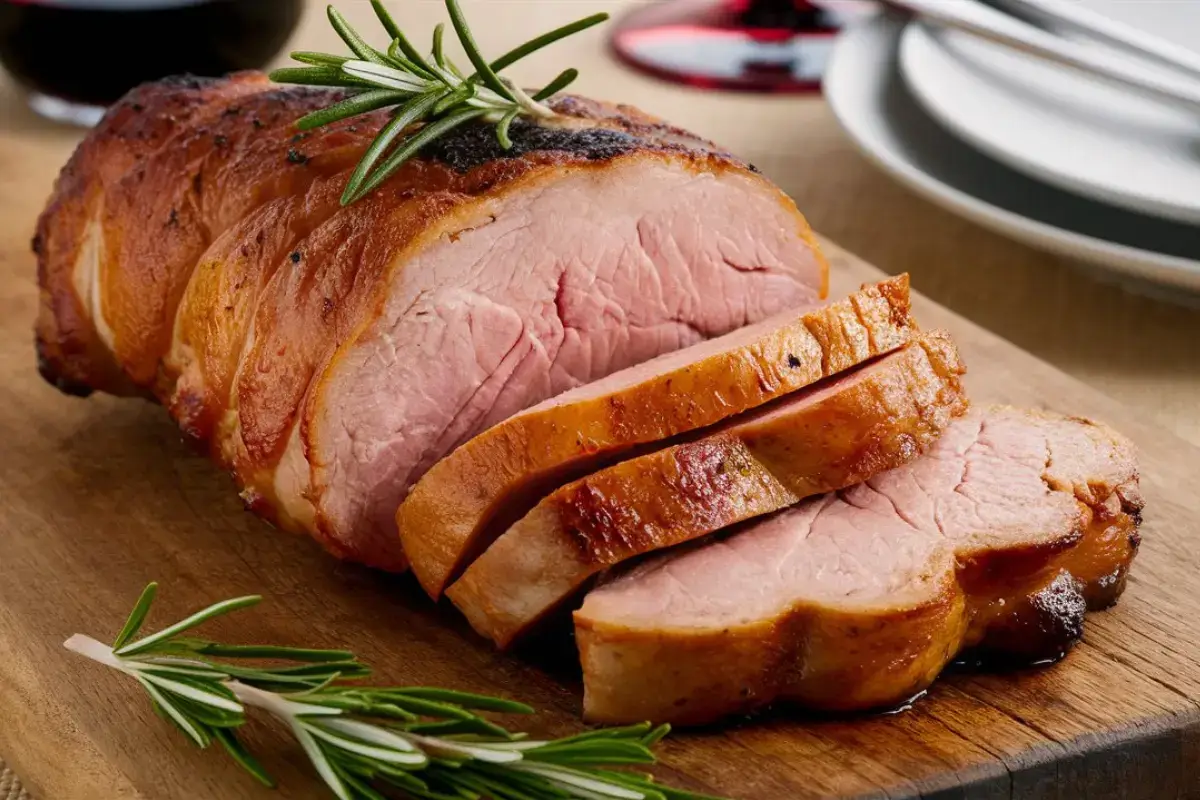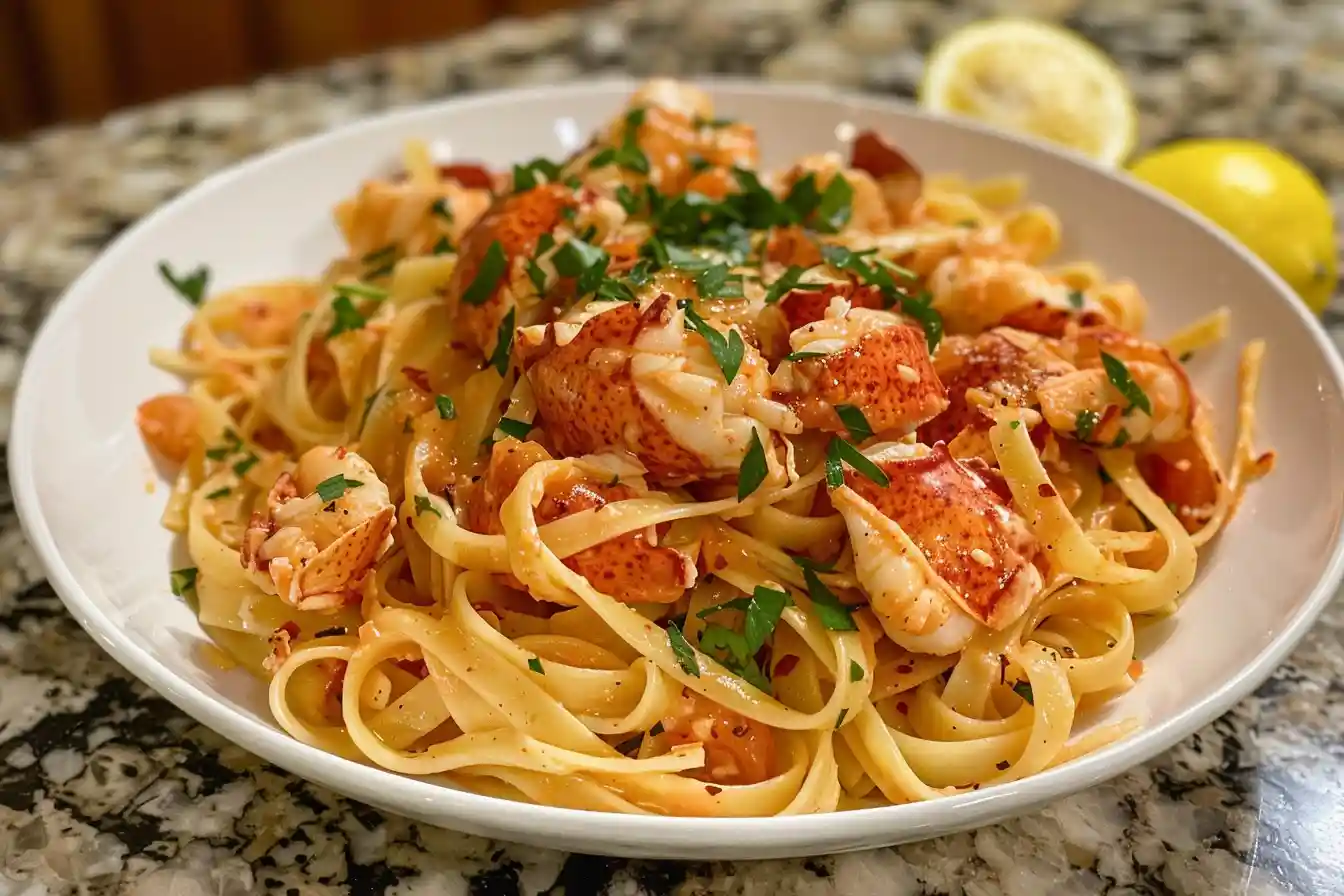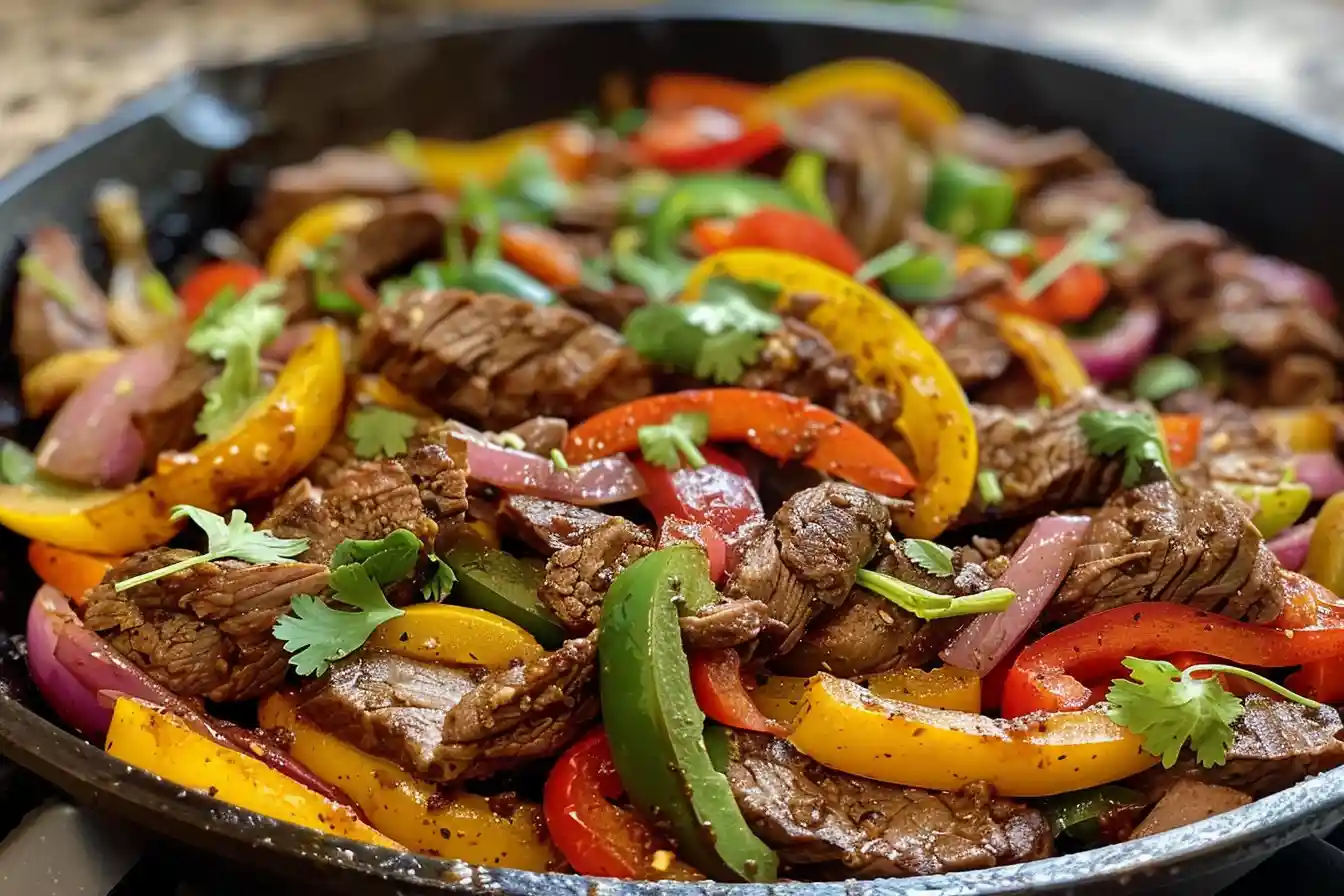When it comes to choosing the right cut of meat for a delicious and satisfying meal, many people wonder, Is pork fillet a good cut? This is a question that not only touches on taste and texture but also dives into the nutritional aspects and culinary versatility of this particular cut.
In this comprehensive guide, we’ll explore everything you need to know about pork fillet, from its origins to its benefits, how to cook it, and why it’s a popular choice for both home cooks and professional chefs.
What is Pork Fillet?
Pork fillet, also known as pork tenderloin, is a long, narrow, and boneless cut of meat taken from the muscle that runs along the backbone of the pig. This cut is incredibly tender due to the fact that the muscle it’s derived from does very little work. Leading to a fine grain and a soft texture that’s unmatched by many other cuts of pork. But what exactly makes pork fillet stand out, and why should you consider it for your next meal?
The Tenderness of Pork Fillet
One of the primary reasons why pork fillet is considered a good cut is its tenderness. Unlike other cuts of pork that can be tough and require slow cooking or marinating, pork fillet is naturally tender. This makes it ideal for quick-cooking methods such as grilling, roasting, or pan-frying. The tenderness of pork fillet also means that it absorbs flavors well, making it a versatile option for a variety of dishes.
Nutritional Benefits of Pork Fillet
When considering whether pork fillet is a good cut, it’s essential to look at its nutritional profile. Pork fillet is a lean cut of meat, meaning it contains less fat compared to other cuts of pork such as pork shoulder or belly. It is high in protein, which is essential for muscle growth and repair, and it also provides important vitamins and minerals such as B vitamins, zinc, and iron. For those looking to maintain a healthy diet while still enjoying flavorful and satisfying meals, pork fillet is an excellent choice.
How to Choose the Best Pork Fillet ?
Choosing the best pork fillet is crucial for ensuring that your meal turns out perfect. When selecting pork fillet, look for a cut that is pinkish-red in color with a slight marbling of fat. The meat should be firm to the touch and free of any dark spots or discoloration. The size of the fillet can vary, but a typical pork fillet weighs between 1 to 1.5 pounds.
Is pork fillet a good cut? Absolutely, but the quality of the cut you choose will greatly impact your cooking experience and the final dish. Freshness is key, so always check the sell-by date and try to purchase your pork fillet from a reputable butcher or supermarket.

The Culinary Versatility of Pork Fillet
Pork fillet is celebrated for its versatility in the kitchen. Its mild flavor profile allows it to be paired with a wide range of seasonings, sauces, and side dishes. Whether you prefer it grilled, roasted, or pan-seared, pork fillet can adapt to various culinary styles, making it a staple in many cuisines around the world.
Popular Cooking Methods for Pork Fillet
- Grilling: Grilling is one of the most popular ways to prepare pork fillet. The high heat of the grill creates a beautiful sear on the outside of the meat, while keeping the inside tender and juicy. For best results, marinate the pork fillet beforehand to infuse it with additional flavors.
- Roasting: Roasting pork fillet in the oven is another fantastic option, especially for those who prefer a hands-off cooking method. Simply season the fillet with your favorite herbs and spices, then roast it until it reaches an internal temperature of 145°F. Roasting allows the natural juices to be retained, resulting in a succulent and flavorful dish.
- Pan-Searing: If you’re short on time, pan-searing pork fillet is a quick and efficient way to prepare this cut. Heat a little oil in a skillet, add the seasoned fillet, and cook it over medium-high heat until it’s golden brown on all sides. This method is perfect for those who want to enjoy a delicious meal in under 30 minutes.
Flavor Pairings and Marinades for Pork Fillet
Pork fillet pairs wonderfully with a variety of flavors. From sweet glazes to savory herb rubs, the possibilities are endless. Some popular flavor pairings include:
- Apple and sage: The sweetness of apple combined with the earthiness of sage complements the mild flavor of pork fillet beautifully.
- Garlic and rosemary: A classic combination, garlic and rosemary add depth and aroma to the meat, making it a favorite for many home cooks.
- Soy sauce and ginger: For an Asian-inspired twist, marinate your pork fillet in soy sauce, ginger, and a touch of honey. The result is a savory-sweet flavor that’s sure to impress.
Is Pork Fillet a Good Cut for Entertaining ?
If you’re hosting a dinner party or a special occasion, pork fillet is an excellent choice for the main course. Its tenderness and flavor appeal to a wide range of palates, and its presentation is always impressive.
You can serve it whole as a centerpiece or slice it into medallions for a more elegant presentation. Pair it with roasted vegetables, a fresh salad, or a creamy mashed potato for a complete meal that’s sure to delight your guests.
Comparing Pork Fillet to Other Cuts of Pork
To truly understand why pork fillet is a good cut, it’s helpful to compare it to other popular cuts of pork. Each cut has its unique characteristics, but pork fillet often stands out due to its tenderness, ease of cooking, and versatility.
Pork Loin vs. Pork Fillet
Pork loin and pork fillet are often confused due to their similar appearance and location on the pig. However, there are key differences. Pork loin is a larger, thicker cut that can be bone-in or boneless, and it typically has a fat cap that adds flavor and moisture during cooking. While pork loin is still tender, it’s not as tender as pork fillet, and it requires longer cooking times, often benefiting from slow roasting or braising.
Pork Shoulder vs. Pork Fillet
Pork shoulder is a cut that comes from the upper part of the pig’s front leg. It’s much fattier than pork fillet and contains a lot of connective tissue, making it ideal for slow-cooked dishes such as pulled pork. While pork shoulder is incredibly flavorful, it requires a longer cooking time to break down the tough fibers, which can be a drawback for those looking for a quick meal. In contrast, pork fillet is leaner and cooks quickly, making it a more convenient option for weeknight dinners.
Pork Belly vs. Pork Fillet
Pork belly is the cut used to make bacon, and it’s known for its high fat content and rich flavor. It’s often used in dishes that require slow cooking to render out the fat and achieve a crispy exterior, such as in braised pork belly or crispy pork belly. While pork belly is beloved for its indulgent taste, it’s much heavier and richer than pork fillet. Pork fillet is a better choice for those seeking a lighter, healthier meal.
Health Benefits of Eating Pork Fillet
Is pork fillet a good cut when it comes to health? The answer is a resounding yes. Pork fillet is one of the leanest cuts of pork, making it a healthy option for those watching their fat intake or following a balanced diet. It’s rich in high-quality protein, which is essential for building and repairing tissues, and it contains important nutrients that contribute to overall health.
Protein Content in Pork Fillet
Protein is a vital nutrient that plays a key role in the body, from building muscle to supporting the immune system. Pork fillet is an excellent source of complete protein, meaning it provides all the essential amino acids your body needs. A typical serving of pork fillet (about 3 ounces) contains approximately 22 grams of protein, making it a great choice for those looking to increase their protein intake.
Vitamins and Minerals in Pork Fillet
In addition to protein, pork fillet is rich in vitamins and minerals that are crucial for maintaining good health. It’s an excellent source of B vitamins, including thiamin, niacin, riboflavin, and vitamin B6. These vitamins play a role in energy production, brain function, and red blood cell formation. Pork fillet also contains zinc, which supports the immune system, and iron, which is essential for oxygen transport in the blood.
Low in Fat
For those who are conscious of their fat intake, pork fillet is a smart choice. It’s one of the leanest cuts of pork, with a fat content of around 3-4 grams per 3-ounce serving. This makes it lower in fat compared to other cuts like pork shoulder or belly, making it a healthier option that still delivers on flavor.
Sodium Content in Pork Fillet
Another benefit of pork fillet is that it’s naturally low in sodium. This is especially important for individuals who need to monitor their sodium intake due to health concerns such as high blood pressure. When cooking pork fillet at home, you have complete control over how much salt is added, allowing you to keep the dish as healthy as possible.

Is Pork Fillet a Good Cut for Different Diets?
Given its lean nature and nutritional benefits, pork fillet is suitable for a variety of diets, including those that are health-focused or weight-conscious. Let’s explore how pork fillet fits into different dietary plans.
Pork Fillet in a Low-Carb or Keto Diet
For those following a low-carb or ketogenic diet, pork fillet is an excellent protein source. Since it’s low in carbohydrates and high in protein, it fits perfectly within the macronutrient ratios recommended for these diets. Pairing pork fillet with low-carb vegetables such as spinach, broccoli, or cauliflower can create a satisfying and nutritious meal that keeps you within your carb limits.
Pork Fillet in a Mediterranean Diet
The Mediterranean diet emphasizes the consumption of lean proteins, fresh vegetables, and healthy fats. Pork fillet aligns well with this diet due to its leanness and versatility. It can be grilled with olive oil and herbs, served alongside a fresh salad with tomatoes, cucumbers, and olives, and finished with a squeeze of lemon for a meal that’s both flavorful and heart-healthy.
Pork Fillet in a Weight Loss Diet
If you’re trying to lose weight, incorporating pork fillet into your diet can be a wise choice. Its high protein content helps you feel fuller for longer, reducing the likelihood of overeating. Additionally, since it’s low in fat and calories, it allows you to enjoy a hearty meal without derailing your weight loss goals. For a balanced plate, pair pork fillet with steamed vegetables and a small portion of whole grains such as quinoa or brown rice.
Common Myths About Pork Fillet
Despite its popularity, there are several myths and misconceptions about pork fillet that might make people hesitant to try it. Let’s debunk some of these myths and provide clarity.
Myth 1: Pork Fillet is Dry and Flavorless
Some people believe that because pork fillet is a lean cut, it’s dry and lacks flavor. However, when cooked properly, pork fillet is incredibly juicy and flavorful. The key is to avoid overcooking, as this can lead to dryness. By using a meat thermometer and removing the fillet from the heat when it reaches 145°F, you can ensure that it remains tender and moist.
Myth 2: Pork Fillet is Difficult to Cook
Another common myth is that pork fillet is difficult to cook or requires advanced culinary skills. In reality, pork fillet is one of the easiest cuts to work with. Its uniform shape allows for even cooking, and it can be prepared using simple methods such as roasting, grilling, or pan-searing. With a little practice, anyone can master the art of cooking pork fillet.
Myth 3: Pork Fillet is Expensive
While pork fillet may be slightly more expensive than other cuts of pork. It’s still an affordable option, especially when considering its quality and tenderness. Plus, because it’s a lean cut, there’s little to no waste. Making it a cost-effective choice for those looking to get the most out of their meat purchase.
Is Pork Fillet a Good Cut for Meal Prep?
Meal prepping has become increasingly popular as a way to save time and ensure healthy eating throughout the week. Pork fillet is an excellent choice for meal prep because it’s versatile, easy to cook in bulk, and stores well.
Cooking Pork Fillet for Meal Prep
When preparing pork fillet for meal prep, consider cooking it in large batches. You can roast or grill several fillets at once. Then slice them into portions that can be stored in the refrigerator or freezer. This allows you to have a ready-to-eat protein source that can be paired with different sides throughout the week.
Storing Cooked Pork Fillet
Once cooked, pork fillet can be stored in an airtight container in the refrigerator for up to four days. If you prefer to freeze it, wrap the fillet tightly in plastic wrap or aluminum foil before placing it in a freezer-safe bag or container. When you’re ready to eat, simply thaw the fillet in the refrigerator overnight and reheat it gently to avoid drying it out.
Creative Ways to Use Leftover Pork Fillet
Leftover pork fillet can be repurposed into a variety of dishes, making it a versatile option for meal prep. Here are some ideas:
- Pork Fillet Stir-Fry: Slice the fillet thinly and toss it with your favorite vegetables and a stir-fry sauce for a quick and healthy meal.
- Pork Fillet Tacos: Shred the leftover fillet and serve it in soft tortillas with salsa, avocado, and a sprinkle of cheese.
- Pork Fillet Salad: Add slices of cold pork fillet to a fresh green salad for a light and satisfying lunch.
After exploring the various aspects of pork fillet, from its tenderness and nutritional benefits to its versatility in the kitchen, it’s clear that pork fillet is indeed a good cut. Whether you’re a seasoned chef or a home cook looking for a reliable and delicious protein source. Pork fillet offers a range of benefits that make it a standout choice. Its ease of preparation, lean nutritional profile, and adaptability to different cuisines and cooking methods ensure that it remains a favorite for many.
Pork fillet is not only good, but it’s also one of the best cuts of pork you can choose. Its ability to deliver a satisfying meal with minimal effort makes it a go-to for both everyday cooking and special occasions. So the next time you’re at the butcher or grocery store. Don’t hesitate to pick up a pork fillet and discover for yourself why it’s such a beloved cut of meat.





